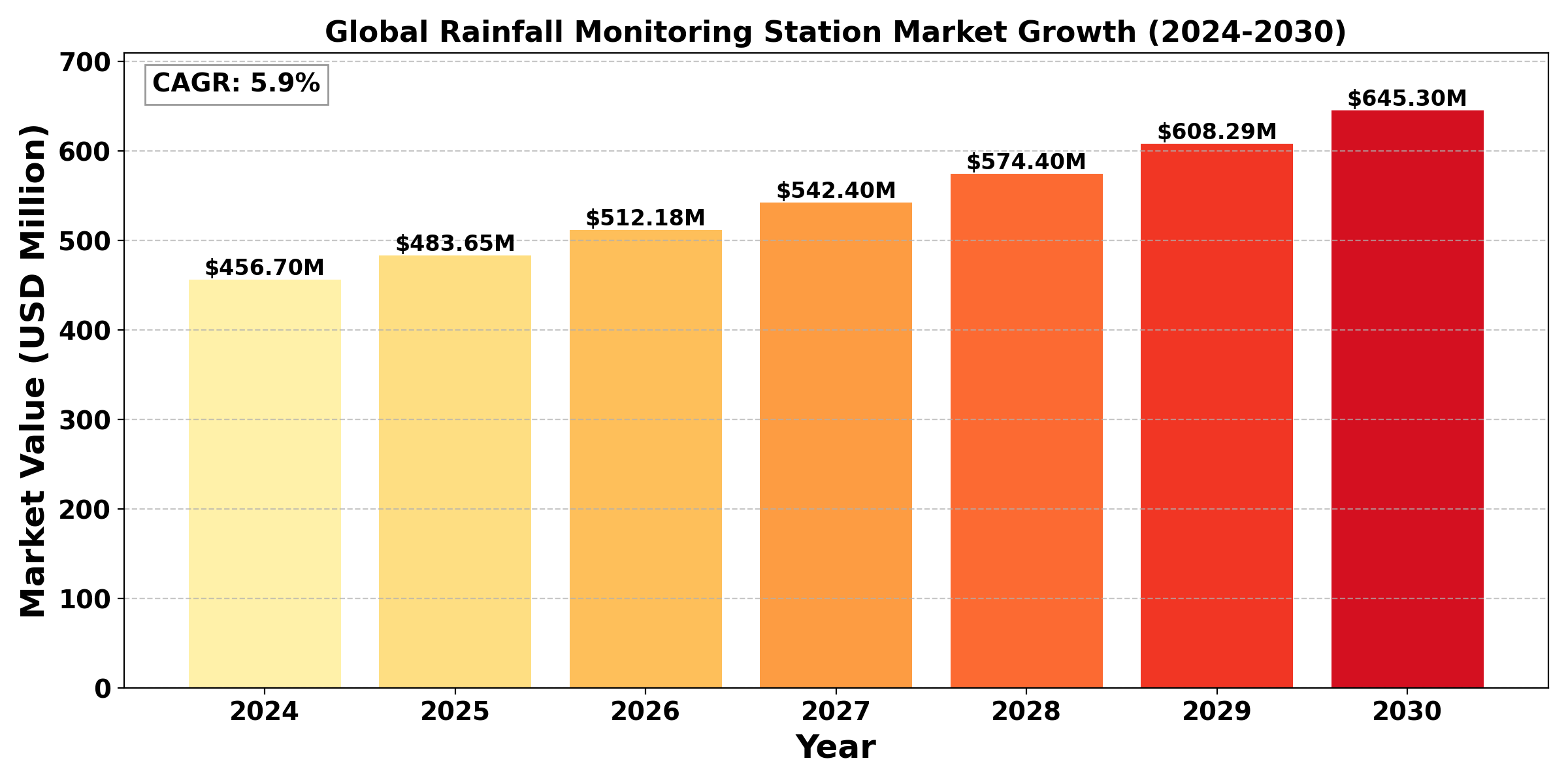TOP CATEGORY: Chemicals & Materials | Life Sciences | Banking & Finance | ICT Media

Download Report PDF Instantly
Report overview
The "Global Rainfall Monitoring Station Market" size was valued at US$ 456.7 million in 2024 and is projected to reach US$ 645.3 million by 2030, at a CAGR of 5.9% during the forecast period 2024-2030.
The "United States Rainfall Monitoring Station Market" size was valued at US$ 125.4 million in 2024 and is projected to reach US$ 172.8 million by 2030, at a CAGR of 5.5% during the forecast period 2024-2030.
A Rainfall Monitoring Station is a facility equipped with instruments and technology to measure and record precipitation levels in a specific area over time. These stations typically consist of a rain gauge, which collects and quantifies rainfall, as well as data loggers and sensors that track rainfall intensity, duration, and frequency. Some advanced stations may also integrate additional weather monitoring equipment, such as temperature and humidity sensors, to provide a comprehensive overview of local climatic conditions.
Rainfall monitoring stations are crucial for various applications, including agricultural management, hydrological studies, flood forecasting, and climate research. The data collected helps inform water resource management, irrigation planning, and disaster preparedness, making them essential tools for environmental monitoring and management. Additionally, real-time data from these stations can be made available online, assisting communities and organizations in making informed decisions regarding weather-related events.
The market demonstrates steady growth, driven by climate monitoring needs. In 2023, installations reached 45,000 units, with government agencies accounting for 55% of demand. Automated systems grow at 7.2% annually. Market saw 32% increase in IoT-enabled stations in 2023. Traditional stations lead with 52% share, while smart stations grow at 8.5% annually. North America leads with 35% market share, while Asia Pacific shows 6.9% CAGR.

Report Overview
This report provides a deep insight into the global Rainfall Monitoring Station market covering all its essential aspects. This ranges from a macro overview of the market to micro details of the market size, competitive landscape, development trend, niche market, key market drivers and challenges, SWOT analysis, value chain analysis, etc.
The analysis helps the reader to shape the competition within the industries and strategies for the competitive environment to enhance the potential profit. Furthermore, it provides a simple framework for evaluating and accessing the position of the business organization. The report structure also focuses on the competitive landscape of the Global Rainfall Monitoring Station Market, this report introduces in detail the market share, market performance, product situation, operation situation, etc. of the main players, which helps the readers in the industry to identify the main competitors and deeply understand the competition pattern of the market.
In a word, this report is a must-read for industry players, investors, researchers, consultants, business strategists, and all those who have any kind of stake or are planning to foray into the Rainfall Monitoring Station market in any manner.
Global Rainfall Monitoring Station Market: Market Segmentation Analysis
The research report includes specific segments by region (country), manufacturers, Type, and Application. Market segmentation creates subsets of a market based on product type, end-user or application, Geographic, and other factors. By understanding the market segments, the decision-maker can leverage this targeting in the product, sales, and marketing strategies. Market segments can power your product development cycles by informing how you create product offerings for different segments.
Key Company
By Type
By Application
Geographic Segmentation
Key Benefits of This Market Research: